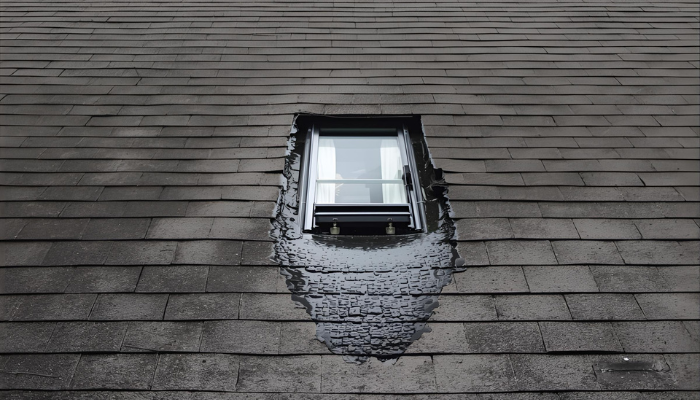Not all people desire, or have the capability to install, traditional gutters. You need to know how to handle roof runoff without gutters, whether you desire a cleaner look, historic siding requirements, or a low-maintenance yard. The following are viable solutions that would ensure water does not get into your foundation, safeguard your landscaping, and minimize erosion, without installing even a single trough.
Start With Grading and Simple Roof Details
The simplest and most significant thing to consider when handling roof runoff without gutters is ensuring that the ground is sloped away at a distance of the house. Slope the lots at least 2% (between 2 inches per 10 feet) to encourage the water to run off. And inspect your drip edge and overhang. Drip edge will be installed, and an ample overhang will also shed off water away from the walls and decrease splashback and moisture on the siding.
Upgrade your home with the best Roofing Installation Services!
Practical Alternatives To Gutters
1. Splash Blocks & Downspout Extenders
Splash blocks or stone pads should be installed at the edges of the roofs in order to interrupt the fall of the water and in order to channel it out of the foundation. They will not hold water, but they will decrease erosion.
2. Rain Chains + Targeted Downspouts
This is the type of design that combines the appearance of no gutters with the ability to direct water flow at the most crucial points. Rain chains are used, which drain into a receiver on the ground or an underground pipe that directs the water away.
3. French Drains & Buried Piping
This is a trench that has a pile of gravel and a perforated pipe (French drain) that will take in the water that is run off the roof and direct it to a safe discharge point or dry well. Excellent in low-lying yards.
4. Dry Wells & Soakaways
Dry wells receive water and allow it to soak into the ground gradually. Combine them with short buried pipes at roof edges in case of intermittent heavy flows.
5. Rain Gardens & Permeable Landscaping
Direct roof runoff into a rain garden with native, water-tolerant plants. This lessens the runoff and filters water, and appears beautiful, a wonderful green choice.
6. Rain Barrels & Cisterns
For smaller roofs, collecting runoff in barrels gives you irrigation water and reduces runoff volume. Combine barrels with overflow routed to a dry well.
Read more: How to Shingle a Hip Roof with 4 Dormers?
Quick Comparison To Choose The Best Solution
| Solution | Cost | Effectiveness | Maintenance |
| Splash blocks | Low | Low–Moderate | Low |
| Rain chains + receiver | Low–Medium | Moderate | Low |
| French drain | Medium–High | High | Low–Medium |
| Dry well | Medium | High | Low |
| Rain garden | Medium | Moderate–High | Medium |
| Rain barrels | Low–Medium | Moderate | Medium |
Read more: How Long Do Wood Shingles Last?
Final Thoughts
Figuring out how to handle roof runoff without gutters comes down to safely moving the water away from your home, grading, hardscape, and landscape solutions that are in line with your taste and location. When you need assistance in selecting the most appropriate combo to fit your property, or you need a visual assessment of the property, ONLY Roofing can help in mapping out the plan and suggest the installers. Visit us to learn more or schedule a consultation!

